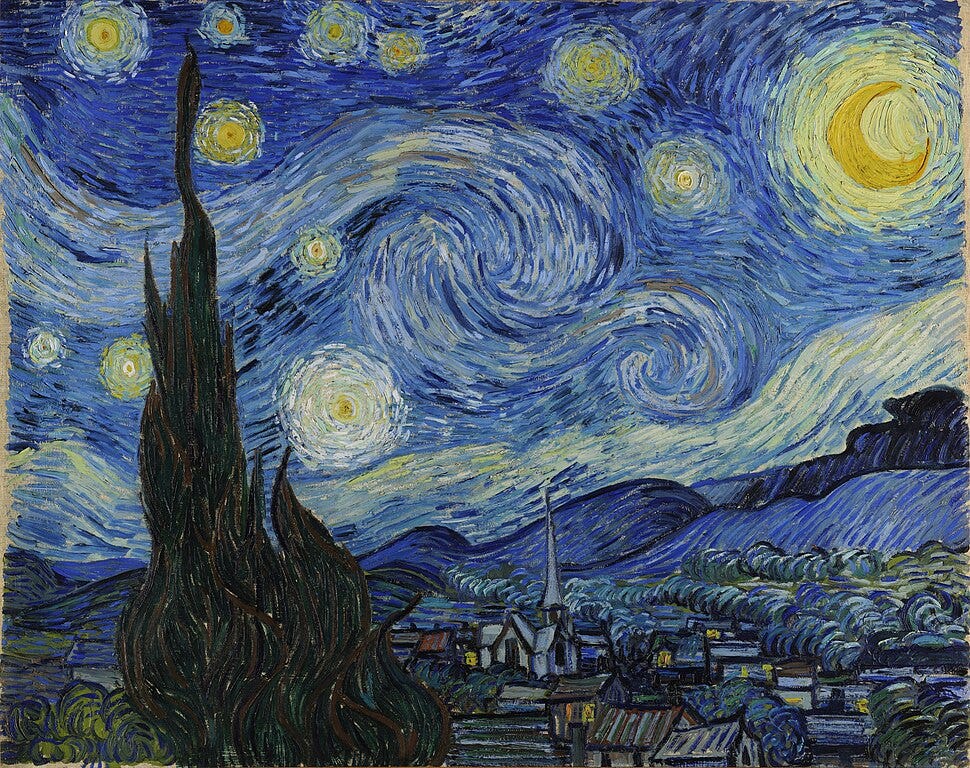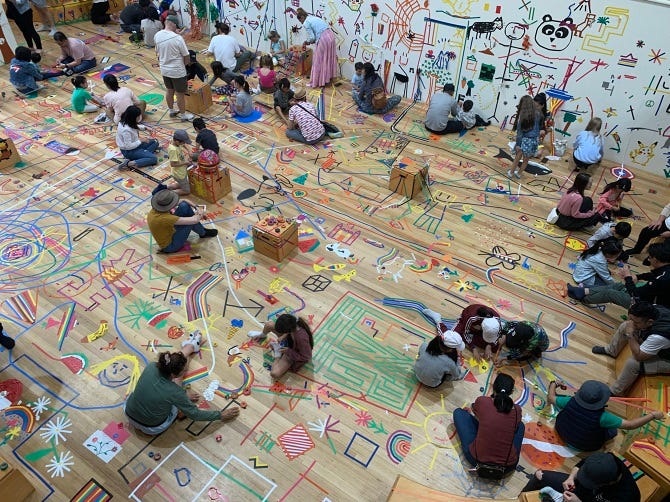The Symphony of Complexity:
Art, Education, and the Interconnected World
On a clear night, you might gaze up at the stars and feel a subtle truth: we are part of something larger, woven into a cosmic tapestry. Our bodies are made of ancient atoms forged in stellar furnaces, our lives enmeshed in a web of relationships spanning from the cells in our blood to the society around us.
This sense of connection is more than poetry or sentiment—it reflects a reality that scientists, philosophers, and artists alike recognize readily. It’s the insight at the heart of systems thinking: the idea that nothing exists in isolation, that everything is connected to everything else. In a world growing more complex by the day, from global ecosystems to the classroom, this way of seeing has become both an art and a necessity.
In what follows, we’ll explore the warm, inviting world of complexity and systems thinking. We’ll see how the whole is more than the sum of its parts, why interdependence is a truth embraced in fields as diverse as ecology and Buddhism, and how art and education are harnessing these ideas to deepen understanding.
Like a friendly guide, we’ll journey through ideas and stories that elevate our perspective—bridging science and the humanities, much as Leonardo da Vinci advised when he said one should “study the science of art, study the art of science” and realize that “everything connects to everything else.”
By the end, you may view the world with fresh eyes: seeing not just separate pieces, but a living symphony of which we are all a part.
From Parts to Wholes:
Understanding Systems Thinking
In our daily lives, it’s tempting to break problems down into pieces—fix one thing at a time and assume the whole will be solved. Classic science and engineering approaches have often done exactly that, isolating variables to understand how each works. Yet, as the pioneers of General Systems Theory observed, focusing on parts alone misses a critical truth: many phenomena only make sense in context of the whole.
The biologist Ludwig von Bertalanffy, who founded general systems theory in the mid-20th century, emphasized the interconnectedness and interdependence of components within any system. In his view, a system—be it an organism, a society, or a solar system—is not just a heap of parts, but an organized whole with properties that emerge from the interactions among those parts. As a central tenet of systems theory puts it, “the whole is more than the sum of its parts,” because new qualities arise from the relationships and dynamics between the parts. These emergent properties can’t be understood just by examining elements in isolation; the magic lies in the interactions.
Consider an orchestra: You can study each instrument alone—a violin, a trumpet, a drum—and understand how it produces sound. But the experience of a symphony, the rich swell of music that gives you chills, is something beyond the individual instruments. It emerges from how all the instruments play together in harmony and counterpoint.
The orchestra, like any complex system, has a collective behavior that transcends the sum of its members. In the language of systems thinking, it’s the relationships, the timing, the feedback between players (listening and adjusting to each other), that create the symphony.
In much the same way, living systems like an ecosystem or the human body exhibit emergent behaviors: an ecosystem’s stability arises from intricate food webs and feedback loops; your consciousness arises from neurons firing in concert. The insight here is that to truly understand any complex phenomenon, we must zoom out and consider the network of interactions, not just the pieces on their own.
Donella Meadows, a leading thinker in systems science, once described our world as “a complex, interconnected, finite, ecological–social–psychological–economic system.” She warned that many of our greatest challenges come from pretending this isn’t so—from acting as if we could treat parts of the world as independent and infinite.
Systems thinking, then, is both a mindset and a methodology.
It urges us to look at wholes, patterns, and dynamics rather than isolated events. It’s about asking, “How do the pieces fit together? What are the connections and feedback loops driving behavior?” rather than just “How can I fix this one piece?” By understanding the whole system, we become better equipped to anticipate consequences and find more sustainable solutions.
To ground this concept, imagine the following scenario: a school wants to improve student performance in math, so it decides to double down on math drills and reduce time for recess and the arts. A traditional analysis might look only at test scores in math—perhaps they tick up a bit. But a systems view would ask: what are the interconnections at play? Cutting recess might lead to restless, less focused kids; reducing arts can sap creativity and motivation, which ironically can impair problem-solving skills even in math.
Indeed, a holistic education leader might ask, “How might cuts to arts education impact student performance in math?” because they recognize the subjects aren’t silos—confidence, engagement, and skills in one area affect others.
In one illustrative case, when middle-school students were tasked with designing a new national park, they had to simultaneously consider social, ecological, and economic factors; through this integrative project, they discovered connections between what might seem like disparate domains. Systems thinking encourages this kind of big-picture problem solving.
It replaces the old “fix a piece” approach with a more organized and holistic approach that can yield success across the board by aligning the parts toward common goals.
In essence, systems thinking is about seeing the forest and the trees, the symphony and the instruments. It’s a perspective that can transform how we approach challenges—be it running a school, managing a company, or addressing global issues. And as we’ll see, it’s an approach that harmonizes remarkably well with insights from ecology, philosophy, and the arts.
Interconnectedness:
Ecology, Philosophy, and the “Web of Life”
Long before “systems thinking” became a buzzword, humans sensed the profound interdependence in nature. “When we try to pick out anything by itself, we find it hitched to everything else in the universe,” observed the naturalist John Muir over a century ago. In the wild Sierra Nevada, Muir saw that you cannot isolate a single flower, a single bear, or a single stream without eventually tracing a myriad of connections — soil, climate, food chains, migrations — tying that one thing to the larger web of life.
Modern ecology echoes that truth as its First Law.
As ecologist Barry Commoner famously put it, “Everything is connected to everything else.” Disrupt one part of an ecosystem, and you will feel effects ripple through the whole: removing a predator can lead to overpopulation of prey and collapse of vegetation; polluting a river can poison species on land and sea far beyond the spill site. The ecosystem is a vast network of interconnections, where “what affects one, affects all,” in Commoner’s words. This principle, once revolutionary, is now common sense in environmental science.
Interestingly, the intuition of interconnectedness spans not just science but also spiritual and philosophical traditions. In Mahayana Buddhism, the metaphor of Indra’s Net beautifully illustrates a universe of inseparable connections. Imagine a cosmic net stretching out infinitely in all directions, with a glittering jewel at each node. In each jewel is reflected the image of all the other jewels — an infinity of reflections.
The Avatamsaka Sutra describes Indra’s Net to convey that each phenomenon in the universe reflects and contains every other. In this view, nothing exists independently; everything exists only through its relations to everything else. This ancient idea of “mutual interpenetration” means the part and the whole mirror one another. To understand one node, you must understand the entire net. Modern interpreters note how apt this is as a metaphor for systems theory: it’s essentially saying that understanding any part of reality requires understanding its context within the larger whole. Science, too, finds Indra’s pearls in every atom—each of us carrying stardust that ties us to the furthest galaxies, each action we take reverberating through society’s web in ways we may not immediately see.
This recognition of interdependence carries profound implications.
For one, it cultivates humility and curiosity. If everything is linked, then solving problems means looking beyond obvious, linear causes. Many real-world issues are “complex causal webs.” A striking example comes from recent history: The 2008 economic recession in the U.S. led to many homes being foreclosed; in California, foreclosed homes meant unattended swimming pools; stagnant pools became breeding grounds for mosquitoes; soon, communities saw a 275% increase in West Nile virus infections. Who would have guessed that a financial crisis could trigger an epidemic of mosquito-borne disease? Yet this is the nature of complex systems—unexpected consequences emerge because of hidden connections. A systems-thinking approach, which in this case would have connected the dots between housing policy, human behavior, and ecology, illuminates these non-obvious links. It teaches us to expect surprise and to look for the unseen threads between events.
Crucially, understanding interconnectedness also nurtures ethics and empathy. If, as Indra’s Net suggests, each being reflects all others, then our actions carry moral weight. We realize, as Commoner said in his second law of ecology, “Everything must go somewhere”—our waste, our words, our deeds circulate through the web and eventually return to affect us all. This perspective urges compassion: harming one part of the network (be it a community or a species) ultimately harms the whole, including ourselves.
Many indigenous cultures and wisdom traditions echo this: an understanding that humans are but a strand in the web of life, meant to live in respect for the balance of the whole. In modern times, systems thinkers encourage expanding “the boundary of caring” beyond our narrow interests. Recognizing our interconnected fate on this planet can motivate cooperation across borders and disciplines, as global challenges like climate change or pandemics clearly illustrate. In short, interdependence is not just a fact of life; it’s a guide to how we should live.
From ecological science to ancient philosophy, the message is consistent: we inhabit a world of entangled threads, where tugging on one strand may quiver others far away. By embracing this reality, we move from seeing the world as a collection of isolated pieces to seeing it as a dynamic, living network—one that is at once intricate and remarkably unified. It’s a perspective that artists and poets have also captured in their own language, as we’ll explore next.
The Art of Science, the Science of Art:
Creativity in Complexity
In a famous dictum often attributed to Leonardo da Vinci, we are advised to “learn how to see” and to realize that “everything connects to everything else.” This line, bridging art and science, hints that the divisions between these domains are artificial. Art and science are two lenses looking at the same reality, each capable of revealing deep truths about complex systems. Where science uses equations and experiments, art uses images, sounds, and stories—but both, at their best, illuminate the hidden patterns of the world.
History offers some delightful examples of art anticipating science in describing complexity. Vincent van Gogh’s Starry Night, with its whirling skies and luminous swirls, is renowned as a masterpiece of art. But only recently did physicists discover that van Gogh’s intuitive vision of turbulent night skies mirrors the actual mathematical patterns of turbulence in fluid dynamics. The bold brushstrokes of Starry Night turn out to quantitatively match Kolmogorov’s theories of turbulence — a feat all the more stunning because Andrey Kolmogorov’s work on fluid turbulence came decades after van Gogh.
When researchers measured the distribution of swirls in the painting, they found van Gogh had captured the eddies of moving fluids with uncanny accuracy. How could this be? One astrophysicist, Adam Frank, suggests it’s no coincidence at all. “Van Gogh was responding intuitively, emotionally, to what he was seeing in the sky,” Frank says, “capturing in the language of painting what would later be captured in the very beautiful language of mathematics.”
In other words, van Gogh’s artist eye perceived the complex pattern in nature—something later confirmed by scientific analysis. Both art and science, Frank reminds us, “have the ability to capture truths about the world.”
The artist, through feeling and observation, and the scientist, through theory and measurement, converged on the same reality: a turbulent fluid flow, whether of paint or air.
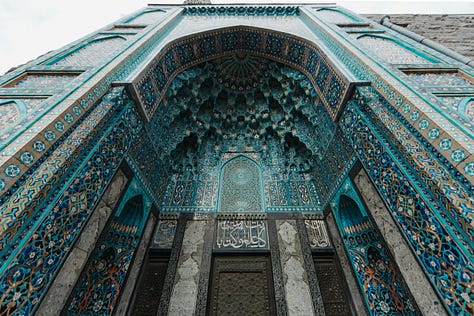
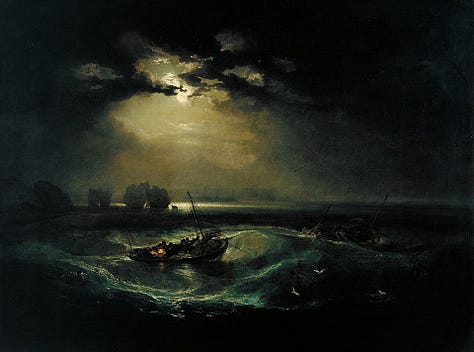
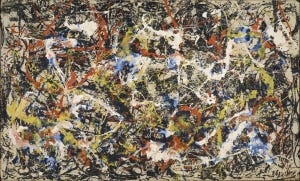
This synergy is not an isolated case. Many artists draw inspiration from complex natural patterns. The painter J.M.W. Turner’s chaotic seascapes, the fractal geometry in Jackson Pollock’s drip paintings, or the intricate symmetry of Islamic tile art—all reflect a search for underlying order in apparent disorder. Likewise, musicians and writers often play with complexity: a Bach fugue layers melodies that interweave in a self-referential, emergent way; James Joyce’s Ulysses arranges events and symbols in patterns that only emerge when you see the novel as a whole.
The arts are full of metaphors for systems.
William Blake evoked seeing “a world in a grain of sand… and eternity in an hour,” a poetic vision of the infinite reflected in the tiny—much like Indra’s Net or a fractal image where each part mirrors the whole. And when the artist and educator Christopher Chase muses that “Nature is more like a flowing living symphony than a material ‘thing.’ And everything is connected, everything is energy,” he is blending artistic sensibility with scientific awe. Chase points out that Van Gogh’s swirling stars, Blake’s cosmic poetry, and Einstein’s theories are all expressions of a shared understanding: a unity behind the diversity of forms. This is the art of complexity – finding beautiful, insightful ways to represent the interwoven, dynamic reality we experience.
What about the science of art?
Interestingly, as we come to understand complex systems, we often find ourselves reaching for metaphors and models that feel almost artistic.
Think of the term “the web of life,” which could as easily title a painting as a biology textbook chapter. Or the concept of feedback loops – a core idea in systems science – which has its analog in musical loops and themes that evolve over a symphony. Scientists now regularly use computer simulations that resemble artful creations: colorful network graphs, fractal visualizations, agent-based models where virtual “agents” roam and interact like characters in an improvised play. Perhaps it’s no surprise, then, that some scientists collaborate with artists to better understand and explain complexity.
One vivid example comes from the Santa Fe Institute, a leading center for complexity science, which has an artist-in-residence program. In one project, artist Briony Barr developed collaborative drawing exercises governed by simple rules—essentially turning a canvas into a real-time simulation of an evolving system. Participants would draw lines and shapes following certain constraints (a bit like how birds follow simple rules in a flock), and over time, emergent patterns appeared. “It’s fascinating to see how very human characteristics such as creativity and interpersonal dynamics, combined with rules over time, produce a whole range of emergent patterns and behaviors,” Barr observes.
In other words, her art experiments demonstrated on paper the same principle that animates flocks of birds or market economies: complex order arising from simple interactions. Here, art became a form of playful science, and science took on the creative openness of art.
The interplay of art and science in understanding systems isn’t just a pleasant anecdote—it has practical power, especially in education. Studies have found that integrating the arts into science and math education can “enhance systems thinking” in students by expanding their perception of how concepts interconnect in real life. For instance, a recent educational program taught children about zoonotic diseases (like West Nile virus) through a blend of ecology and art. Elementary students engaged in drawing, music, and storytelling activities about mosquitoes and habitats alongside the science.
The result? After the program, the children showed a much richer understanding of the connections in the ecosystem and even of related careers; they could see how human health, animal populations, water, and community behaviors all link together. The arts helped them visualize and emotionally engage with the complex web of cause and effect.
This underscores a powerful point: metaphor and imagination are tools for thinking. A well-chosen metaphor can convey a system’s structure more clearly than a page of jargon. When we say “city ecosystem” or describe the internet as a “web,” we’re using metaphors to grasp complexity. Artworks and stories function similarly as cognitive tools—they model complex situations in a way our minds can hold. The creative right brain and the analytical left brain work best not in opposition, but together, to comprehend the full tapestry of reality. Leonardo’s exhortation to blend art and science was not just Renaissance wisdom; it’s increasingly validated by cognitive research and educational practice today.
Learning in a Complex World:
Systems Thinking in Education
If the world is a complex symphony of interacting systems, then education — the way we prepare the next generation — must adapt to that reality. There’s a growing movement in schools and universities to infuse systems thinking into teaching, so that students learn to see the bigger picture and make connections across disciplines. After all, the challenges these students will face, from climate change to social inequality, are notoriously interconnected. Solving them will require holistic thinking and collaboration, not narrow specialization or siloed knowledge.
Holistic education is not entirely new.
Progressive educators like John Dewey in the early 20th century argued for integrated, experience-based learning. But today, the case for it is even more urgent. A simple way to describe systems thinking in education is that it helps one “understand the complex education system in a more holistic way.”
Rather than viewing a school as just a collection of separate classes, or a curriculum as just a checklist of topics, systems thinking views an education system as many interdependent parts working together. These parts include not just teachers and students, but also laws and policies, community factors, resources like books and technology, and cultural practices. How these components interact determines the “health” of the whole educational ecosystem. When school leaders adopt this mindset, they start to anticipate how a change in one area might impact others.
For example, if you alter a policy about teacher evaluation, how will that ripple out to teacher morale, to classroom practices, and ultimately to student experience? If you cut funding in one program, what chain reactions might follow in student performance or community support? By asking such questions, educators move from reactive problem-solving to proactive design of systems that can adapt and self-correct.
In practice, applying systems thinking in the classroom can be incredibly empowering for students. It often means designing projects or discussions that cross subject boundaries. A science lesson might involve economics and ethics; a literature lesson might touch on history and ecology.
In Tucson, Arizona, one middle school’s project on designing a national park (mentioned earlier) had kids grapple with ecology (limiting environmental harm), sociology (honoring an indigenous burial ground), and economics (attractiveness to visitors) all at once. The students weren’t just learning isolated facts; they were learning how to balance trade-offs in a complex system, much like real-world planners must. Teachers reported that this approach strengthened students’ analytical and problem-solving skills, precisely because the kids learned to connect the dots between social, ecological, and economic components. Such participatory, problem-based learning mirrors what Donella Meadows advocated: “seeing systems whole” requires moving beyond traditional disciplinary silos and engaging with real problems where students must integrate knowledge.
Arts education has emerged as a valuable ally in this mission.
Programs integrating art with STEM (science, technology, engineering, math) — often called STEAM — have shown particular promise in fostering systems thinking. Why? Because the arts often encourage seeing things in context, thinking metaphorically, and considering perspectives and impacts that linear analytic methods might ignore. A 2022 study suggested that using art in STEM learning “promote[s] the synthesis of different types of knowledge across different scales and systems.”
In the case of the zoonotic disease after-school program, art was the glue that helped students link microscopic biology with community practices and environmental stewardship. The researchers concluded that blending arts and sciences “expanded student perception of the interconnectedness” of what they were learning with their everyday lives. This is a key outcome: students stop seeing science class, art class, and life outside school as separate boxes, and instead see a continuum. Education becomes less about memorizing facts and more about connecting knowledge and applying it in novel contexts.
Moreover, a systems thinking approach in education often shifts the roles of teacher and student in fruitful ways. Rather than the teacher simply imparting isolated facts (lecturing while students passively absorb), the teacher becomes a facilitator of exploration, and the student becomes an active participant in mapping connections. It aligns with learner-centered, constructivist pedagogies, where students build understanding through experience and reflection.
For instance, educators using systems thinking might prompt students with questions like:
How does what we learned in biology about ecosystems relate to what we see in our school garden?
Can we draw a diagram of those connections?
What might happen if a new species (or a new policy) is introduced?
By engaging students in this way, we not only deepen their comprehension of content, but also teach them a transferable skill: how to approach any complex situation methodically and curiously. Students learn to ask the big "What if?" questions and to seek out patterns, much like a detective of knowledge.
There’s also a growing recognition that social-emotional learning benefits from systems thinking. When students perceive how their community or classroom is an interconnected system, they often develop greater empathy and collaboration skills.
One educator compared a healthy school to an aspen grove: each aspen tree shares a common root network, so the grove survives only if all trees get the resources they need.
In a similar way, a classroom thrives when attention is paid to every student’s well-being and to the relationships between them. Adopting this “grove mentality” encourages a supportive, inclusive culture. It echoes the earlier idea from Indra’s Net and ethics: recognizing our interdependence fosters a sense that we’re all in this together.
Education, therefore, is not just about individual achievement, but about nurturing a community of learners who understand and value their interconnections.
In summary, bringing complexity and systems thinking into education equips learners with a kind of literacy for the 21st century. The world they inherit is one where challenges are interconnected (think of how a pandemic is simultaneously a medical, environmental, economic, and social issue) and where solutions will require teamwork across traditional boundaries.
By learning through integrated projects, arts-science blends, and holistic perspectives, students practice the art of seeing broadly and systemically. They learn, as one curriculum developer put it, to look “beneath the surface” of problems for the network of causes, rather than settling for quick fixes. They also learn that they are elements of larger systems, be it their school, community, or ecosystem, and thus have the agency to influence outcomes through informed action and collaboration. Such an education doesn’t just impart knowledge—it elevates the general reader (or learner) to think a bit more like an erudite systems scientist or a thoughtful artist, oscillating between big-picture and detail, and appreciating the value of both.
Embracing the Symphony:
Cultivating a Systems Perspective
Complexity can feel overwhelming at times.
Confronted with a web of interlinked causes, one might wonder, “Can we ever truly understand it?” The answer is that while we may not predict every detail (surprises are inevitable), we can learn to navigate complexity with wisdom and humility. Embracing a systems perspective is like learning to appreciate a grand piece of music. You don’t need to hear every single note or predict every turn of melody in advance to enjoy or comprehend the symphony; you learn to flow with it, to notice recurring themes, to sense when the music is building to a crescendo. Similarly, with systems thinking, we learn to expect the unexpected, to recognize patterns of behavior (like feedback loops that cause booms and busts), and crucially, to respond to changes wisely rather than just react impulsively.
One principle of systems wisdom is learning before leaping.
Meadows advised, “Before you disturb the system in any way, watch how it behaves. If it’s a piece of music or a whitewater rapid… study its beat. If it’s a social system, watch it work. Learn its history.”
In practice, this means when faced with a complex situation—be it a community issue or a personal project—take a moment to observe and gather information about how the pieces relate. Often, by simply mapping out a system (drawing a quick diagram of factors and arrows of influence), people see non-obvious leverage points where a small change could make a big difference, or conversely, spots where an intervention might backfire due to a feedback effect. This kind of mapping is both analytical and creative: it requires clear data and logical links, but also a bit of imagination to see connections that aren’t immediately visible.
Another key is iterative learning and adaptation.
Because complex systems can’t be fully controlled, our best approach is to act, observe, and adjust. It’s like tending a garden rather than building a machine.
A gardener plants seeds (an intervention), then watches how the garden grows, responding to signs of too much shade here or pests there. In the same way, a city planner or a teacher implementing a new program might start with small changes, monitor outcomes, and be ready to tweak or even reverse course. This adaptive, humble approach contrasts with the often arrogant attempts to command systems without feedback.
As Meadows humorously noted, “Pretending you’re in control even when you aren’t is a recipe not only for mistakes, but for not learning from mistakes.” Systems thinking replaces that hubris with curiosity and openness: every outcome is information, a chance to update our understanding of the system.
Finally, embracing complexity means cultivating a sense of wonder and connectivity in our daily outlook. In a fragmented world, there’s something deeply comforting about sensing the hidden threads that link us. It might be as simple as acknowledging the myriad people and processes that brought your morning coffee to you—the farmers, the water cycle that nourished the coffee plant, the global trade systems, the barista’s skill. Recognizing those connections can transform an ordinary act into a moment of gratitude and insight.
It’s reminiscent of Mister Rogers, the beloved educator who often reminded children that behind every thing we use or every service we enjoy, there are people and stories intricately connected. Fred Rogers, with his gentle warmth, essentially taught kids a form of systems awareness: someone who grows the food, someone who delivers the mail, someone who built the house—a neighborhood of helpers creating the world we experience.
In our increasingly complex global “neighborhood,” that mindset is gold. It fosters appreciation and cooperation, a readiness to work together since we see that our destinies are entwined.
As we conclude this exploration, we circle back to the stars and the cosmos with which we began. The late astronomer Carl Sagan, an exemplar of erudition and warmth, often spoke of the connectedness of all things. He loved to remind us that we are made of star-stuff, that the calcium in our bones and the iron in our blood were birthed in long-ago supernovae. Sagan’s point was both scientific and spiritual: knowing our atomic origin story links us to the universe and to each other. “We are a way for the cosmos to know itself,” he said, highlighting that our consciousness is an emergent property of cosmic evolution, and through us (tiny parts of the whole) the whole reflects on itself.
It’s Indra’s Net once again, scaled to the universe.
When we see ourselves through this lens—children of a creative cosmos, as Christopher Chase wrote—our compassion naturally expands. We realize that divisions like nationality, race, or class are shallow compared to the profound unity of sharing the same planet, the same biosphere, the same stardust.
In the end, the art of erudition in the realm of complexity is about honoring all perspectives and layers of understanding. It’s about knowing that a complete mind, as da Vinci envisaged, “studies the art of science and the science of art”, and above all “learns how to see”. To see the connections hiding in plain sight. To see the forest and the trees, the symphony and the instruments. To be, in a sense, like a wise gardener or a patient conductor—working with the rhythms of the system rather than against them.
Stepping back now, take in the big picture one more time: life, society, knowledge—it's all an ever-evolving, interlocking mosaic. Complexity is not a hurdle to overcome but a reality to appreciate, an invitation to creativity and collaboration.
Like a great piece of music or a stunning piece of art, the complexity of our world can move us, teach us, and inspire us to be better participants in the grand system of life. Each of us is a note in the melody, a thread in the tapestry, a jewel in Indra’s infinite net.
And when we truly listen and truly observe, we find that—just as the ecologists, sages, and poets have promised—everything is indeed connected to everything else, in the beautiful art of complexity that surrounds us.



